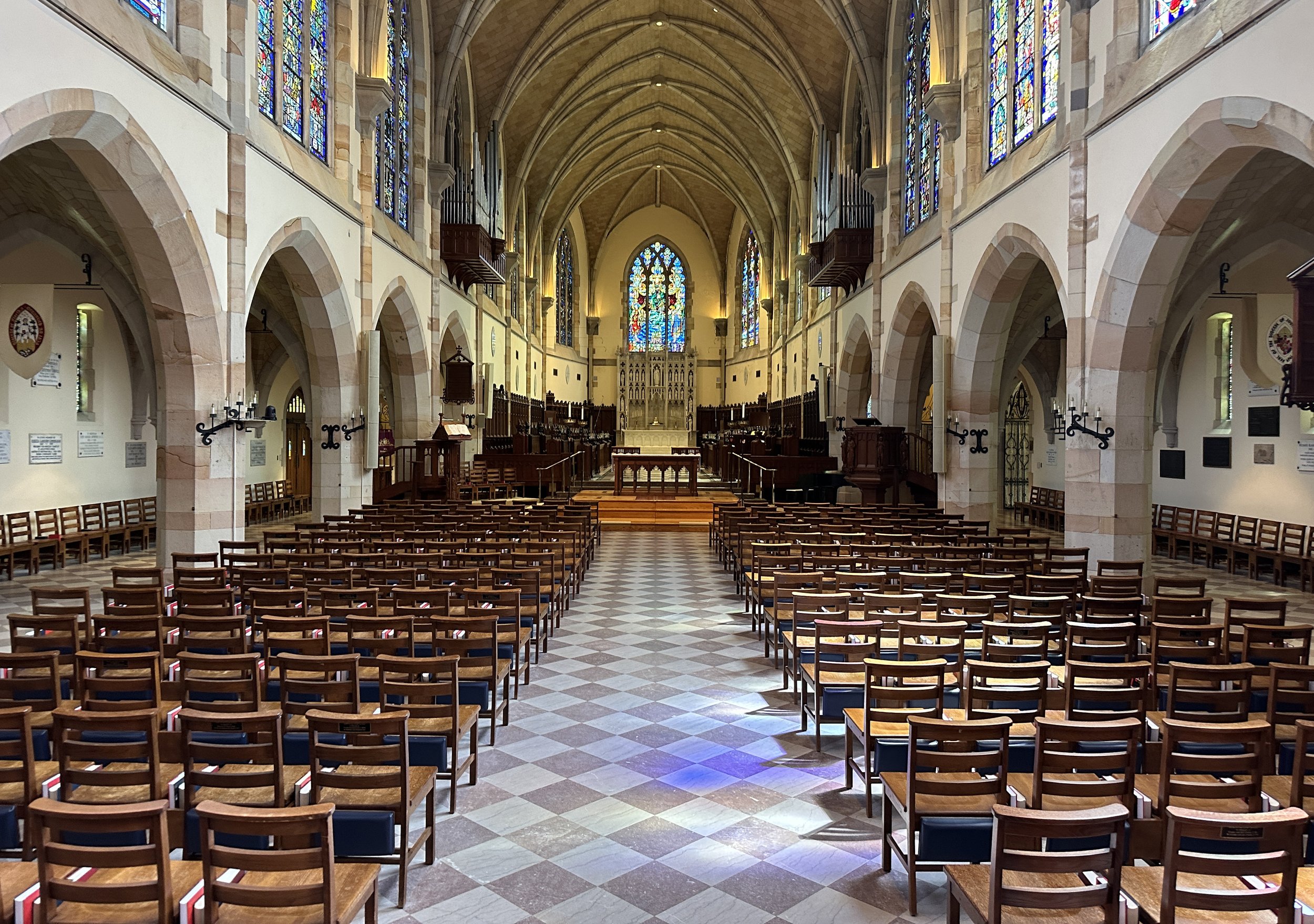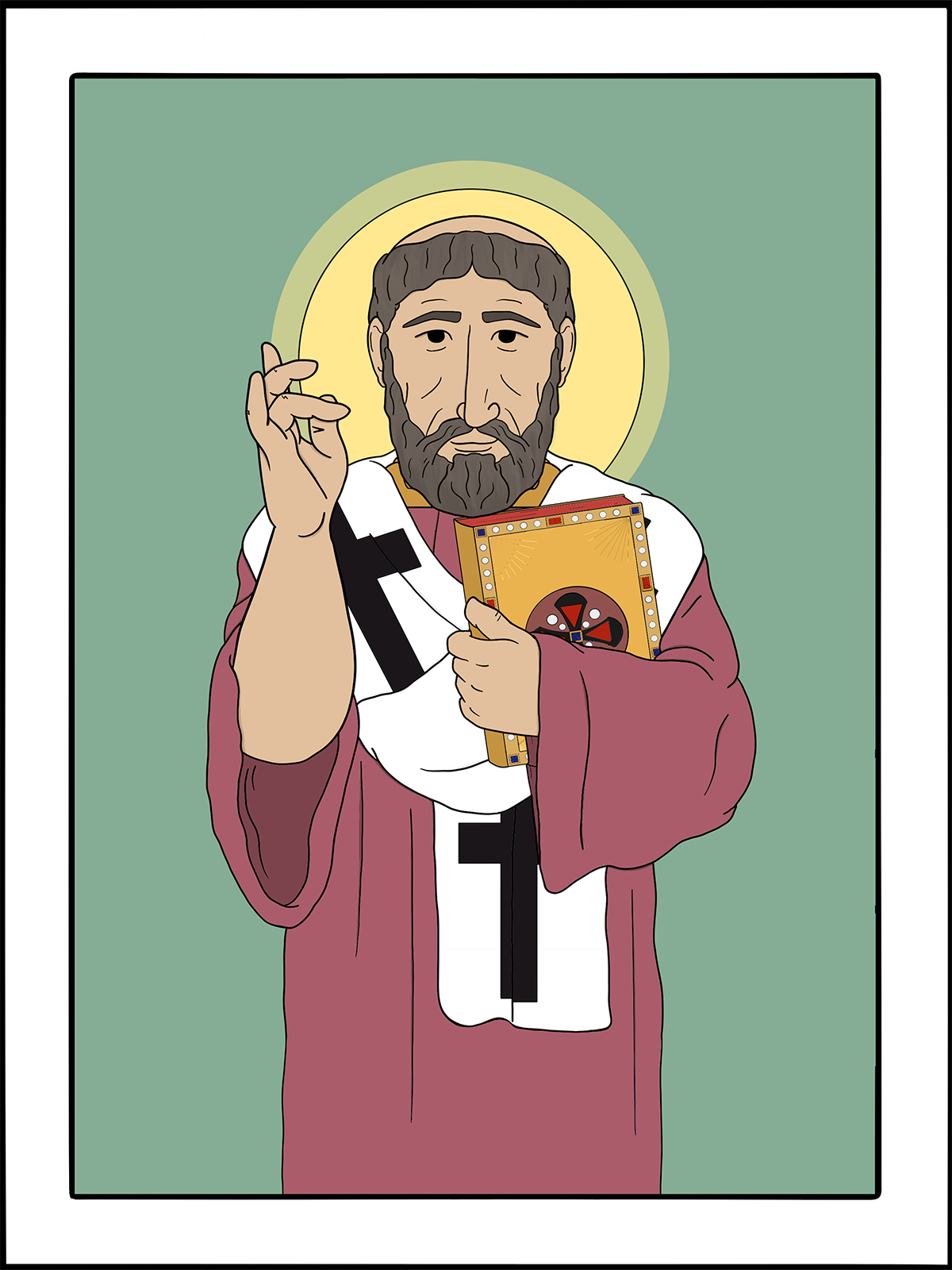
September 19
Theodore of Tarsus
Archbishop of Canterbury, 690
art by Rev. Kirsten Kohr of Geneva, Ohio Almighty God, who gave your servant Theodore of Tarsus gifts of grace and wisdom to establish unity where there had been division and order where there had been chaos: Create in your church, by the operation of the Holy Spirit, such godly union and concord that it may proclaim, both by word and example, the Gospel of the Prince of Peace; who lives and reigns with you and the Holy Spirit, one God, for ever and ever. Amen.
Theodore was born in Asia Minor in 602 in Saint Paul’s native city of Tarsus. He was ordained as Archbishop of Canterbury by Pope Vitalian on March 26, 668.
A learned monk of the East, Theodore was residing in Rome when the English church, decimated by plague and torn with strife over rival Celtic and Roman customs, was in need of strong leadership. Theodore provided this for a generation, beginning his episcopate at an age when most people are ready to retire.
When Theodore came to England, he established a school at Canterbury that gained a reputation for excellence in all branches of learning and where many leaders of both the Irish and the English churches were trained. His effective visitation of all England brought unity to the two strains of tradition among the Anglo-Saxon Christians. For example, he recognized Chad’s worthiness and regularized his episcopal ordination.
Theodore gave definitive boundaries to English dioceses, so that their bishops could give better pastoral attention to their people. He presided over synods that brought about reforms, according to established rules of canon law. He also laid the foundations of the parochial organization that still persists in the English church.
According to Bede, Theodore was the first archbishop whom all the English obeyed, and possibly to no other leader does English Christianity owe so much. He died in his eighty-eighth year on September 19, 690, and was buried, with Augustine and the other early English archbishops, in the monastic Church of Saints Peter and Paul at Canterbury.
Excerpted directly from “Lesser Feasts and Fasts 2022,” p. 418-419.

